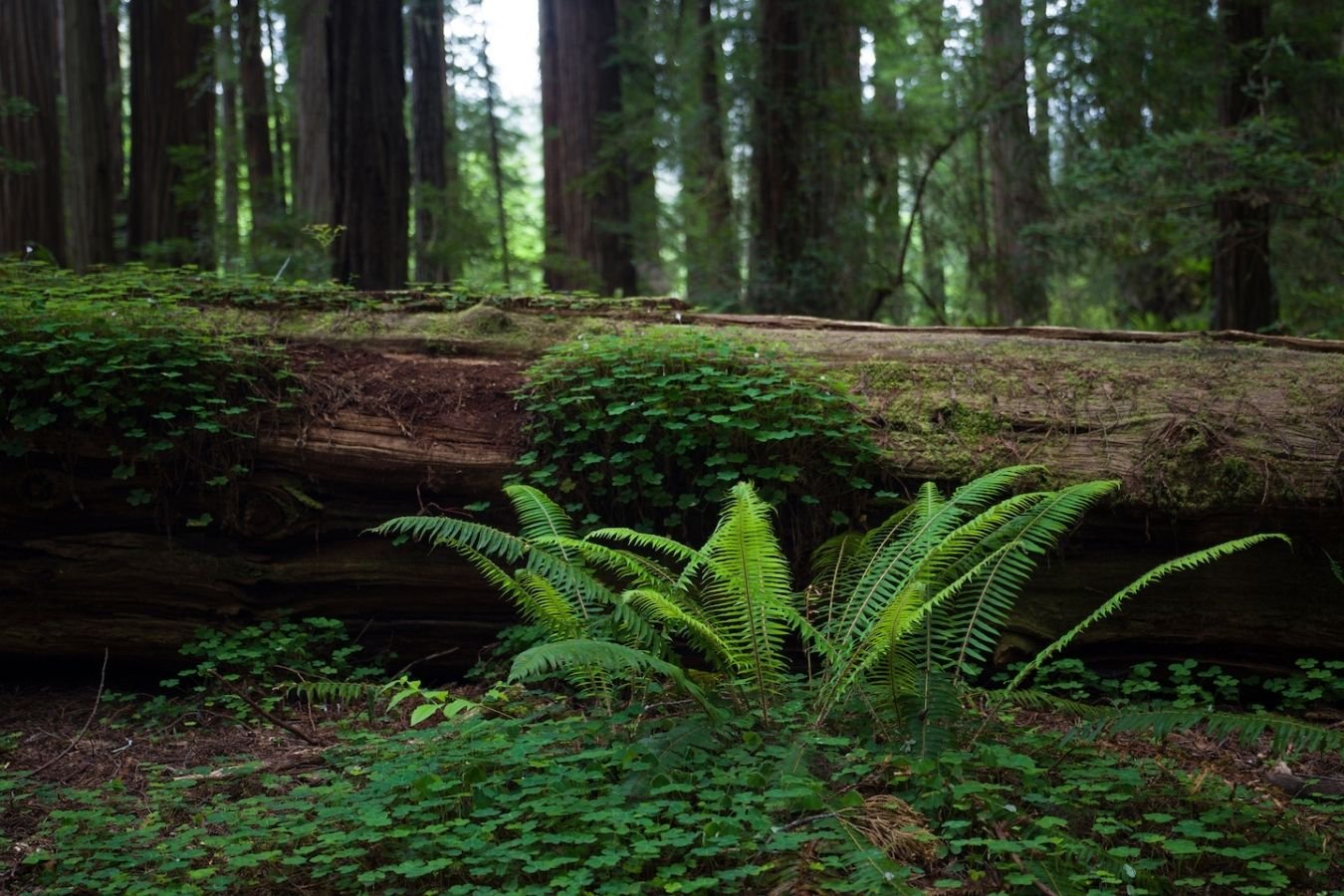Forest bathing in Redwoods National and State Parks
The sun is shining but the canopy of trees creates a soft and even light that is only occasionally broken by a ray streaking through the branches. The air is fresh, crisp and cool. I’m delighted that there aren’t many people on the trail. The Redwoods are known as a less-trafficked national park. It’s so quiet; I hear the muted crunch my boots make as I walk along the humus path, I hear birds calling to one another, I hear my breath and the faint sound my jacket makes as I move. The overhead branches rustle in the wind even though there isn’t any breeze down where I am. I take a deep breath and inhale the redwoods, hold it in then exhale and let my shoulders relax. I take another and the elusive aroma has drifted away. It’ll be back. Later I’ll try again and it’ll be back.
This is why I came here. To listen to the forest, to breathe it in deeply, to let it surround me in everything only it can offer. What it offers is exactly what I need - a chance to let my body feel the disconnect, to let my shoulders relax, to untie the tension in my neck and back, relieve myself of the day-to-day stress, and release the involuntarily anxiousness that is always waiting for the next digital interruption.
This is forest bathing.
Containing the tallest trees on earth, the Redwood National and State Parks preserves the largest remaining ancient redwood forest in the world. In the old growth section the forest floor is open and carpeted by soft ferns, small plants and patches of light streaking through the tall trees. It is the perfect environment for the Japanese practice of Shinrin-Yoku or “forest bathing.”
What is forest bathing
Shinrin-Yoku started in the late 1980s when the Japanese Ministry of Agriculture, Forestry and Fisheries suggested the idea of “forest bathing” as ecotherapy to combat tech burnout and to encourage people to reconnect to the forests. Research, conducted mostly in Japan and South Korea, has shown significant reductions in stress, anger, anxiety and depression amongst participants who went forest bathing. One study published in 2008 examined the effects of walking in the forest to walking in the city. Even though the activities required the same amount of physical work, researchers found that the forest walk led to more significant reductions in stress hormones.
Studies have also shown that breathing in certain compounds found in forest air, such as the scent of cedar, can be very beneficial to reducing blood-pressure. Inhaling these tree-derived compounds – known as phytoncides – can boost the activity of white-blood cells which are known as natural killer cells.
There is no air quite like the redwood forest: fresh, crisp and subtle in its aroma. Although Redwoods are not cedar trees and don’t have a super powerful smell, the relative calmness of this national park coupled with the amount of forest that surrounds you, makes it the perfect place to practice forest bathing.
How to practice forest bathing
To get started forest bathing it’s important to understand that it is not hiking, although you are walking along paths in the forest; the idea is not to get a cardio workout in or to work up a sweat conquering an intense trail. The objective is to slow down and unclutter your mind, breathe in the forest air and awaken all of your senses to the present moment. Also, you don’t need to go into a wilderness backcountry to practice forest bathing. Walking in any natural area will do.
Follow this simple guide to get started on your own forest bathing practice:
Leave your phone, camera and other distracting digital devices behind. You want to be fully present to experience the environment.
Allow your body to wander aimlessly without goals and expectations.
Stop frequently during the walk and open your senses up to what is around you. Examine the leaves on a plant, run your fingers over the bark on a tree, feel the sensation of the path beneath your feet.
Find a comfortable spot and sit and relax. Listen to the sounds around you. Notice what happens when the wildlife becomes used to your presence.
If you go with others, make an arrangement to avoid talking until you are finished with the walk.
